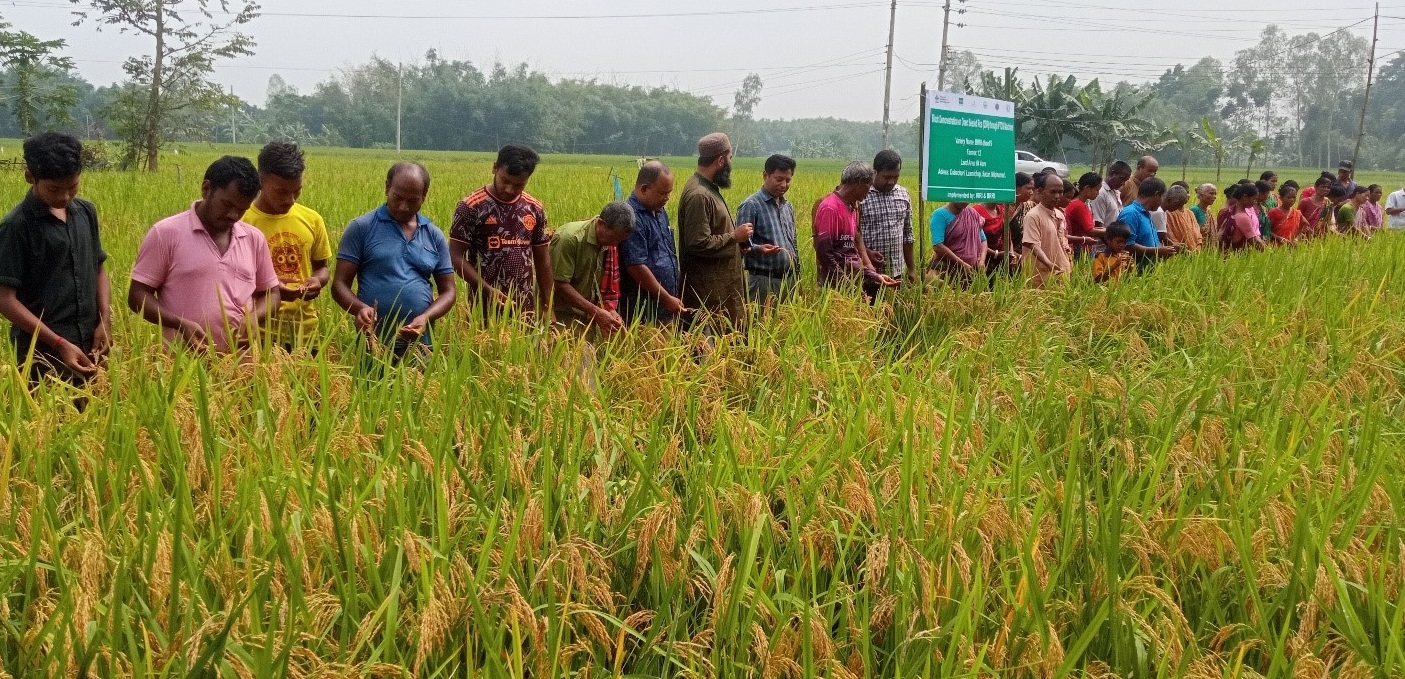Shattering food, nutrition, and economic security barriers in Bangladesh through mixed farming systems
- From
-
Published on
02.06.24
- Impact Area

Mixed farming systems in traditional agricultural systems provide potentially many benefits for smallholder and marginal farmers. (Photo: IRRI Bangladesh)
Including mixed farming systems in traditional agricultural systems has potential benefits for farmers, especially for smallholder and marginal farmers. It not only helps farmers diversify from the production of grains to vegetables and the rearing of livestock thus resulting in dietary diversity of the farmers, but also helps increase their net profitability, enhances soil health, and leads to environmental sustainability and improvement in overall biodiversity.
The agricultural sector plays an important role in the overall development of Bangladesh in terms of gross domestic production (GDP) and employment. Most people in the country rely on agriculture for their livelihood directly or indirectly.
Rice, the staple food for Bangladesh, is grown in more than 70% of the total cultivated area with mono-cropping as the dominant crop production system practiced by smallholder farmers.
Farm-productivity ceiling
Rice mono-cropping has disadvantages such as low income, high water usage, and limited dietary diversity for farmers. Bangladeshi farmers also primarily practice subsistence farming and have almost reached the full potential of rice productivity with little room for further increasing the yields of small farms.
To work around the margins of rice mono-cropping, smallholder farmers and landless rural households with small homestead areas raise cattle, buffalo, goats, and poultry for household consumption. The animals are fed with crop residue but because of small farm sizes, livestock feed is also available in small quantities.
Related news
-

ICRISAT to Deliver World-Class Services as CGIAR’s Breeding Resources South Asia Hub
International Crops Research Institute for the Semi-Arid Tropics (ICRISAT)07.07.25-
Biodiversity
-
Food security
Strategic collaboration to scale innovation and deliver harmonized, high-quality support across CGIA…
Read more -
-

Multifunctional Landscapes that reconcile food production, with ecosystem restoration and biodiversity conservation
Multifunctional Landscapes Science Program06.07.25-
Biodiversity
-
Environmental health & biodiversity
The CGIAR Multifunctional Landscapes Science Program (MFL SP) is driven by a bold vision of…
Read more -
-

Shaping policy changes for a sustainable cropping system in Uttar Pradesh, India
International Rice Research Institute (IRRI)03.07.25-
Food security
by Dr. Proloy Deb and Dr. Swatantra Dubey The Central Plain region of Uttar Pradesh…
Read more -
